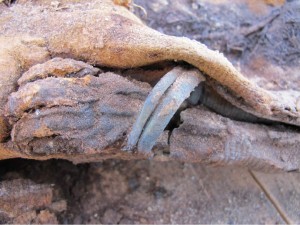BYU research on ancient Egyptian artifacts was temporarily placed on hold the beginning of January because of a statement made from BYU associate professor of ancient scripture Kerry Muhlestein.

Muhlestein is the director of the BYU Egypt Excavation Project and researches Christianity in Egypt. The excavation consists of three main areas: a huge cemetery, a small pyramid and a Greco-Roman township.
“Dr. Muhlestein’s research focuses on the texts and iconography of Egyptian religion, international contact between ancient Egypt and her neighbors, the Egyptian juridical process, Egyptian literature and the overlap of the Biblical and Egyptian worlds,” according to his biography on BYU’s Religious Education website.
Muhlestein claimed to have potentially discovered an Egyptian burial site where there are “millions” of naturally preserved mummies to be studied.
“We are fairly certain we have over a million burials within this cemetery. It’s large, and it’s dense,” Muhlestein said.
His statements over the number of mummies found stirred trouble with Youssef Khalifa, head of the ancient Egypt department at the Egyptian Ministry of Antiquities. He responded to Muhlestein’s statement by saying this was “not true,” that it was “a rumor” and “there are no million mummies” to be found at the site.
The ministry initially canceled BYU’s permission to study the site, a project the university has been working on for 28 years. There is still no statement as to how long the study was canceled before it was opened to BYU research again.
During the period of probation for BYU, Muhlestein said he hoped differences could be worked out. “I believe there have been some misunderstandings,” he said. “I would like to work this out with the ministry, for whom I have the greatest respect.”
Muhlestein and the ministry were able to work things out, and the restriction has been lifted since mid-January. Muhlestein will return to working at the site, although details are unclear on when that will happen.
“I am fully pleased with the spirit of cooperation and communication we have had with the Egyptian Ministry of State for Antiquities over the years and during the last few weeks,” Muhlestein said. “It has allowed miscommunications to be rectified.”
The research being conducted is at a cemetery called Fag el-Gamous, which is located 60 miles south of Cairo, Egypt. The site was discovered by a team of BYU archaeologists in 1980. They were given sole responsibility for the excavation in 1981.
The mummies found at the burial site are not royalty; they appear to be common people. The bodies have been well preserved, so the organs and remains are virtually complete. The preservation results from sealing in the moisture and the atmosphere of the burial spot.
In addition to well-preserved bodies, other artifacts, such as pottery, coins, textiles, jewelry and even colorful booties designed for a child have also been discovered.
So far, around 1,000 bodies have been excavated from the site.




